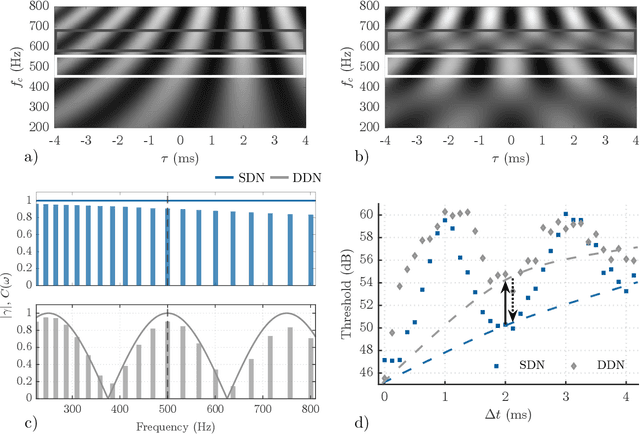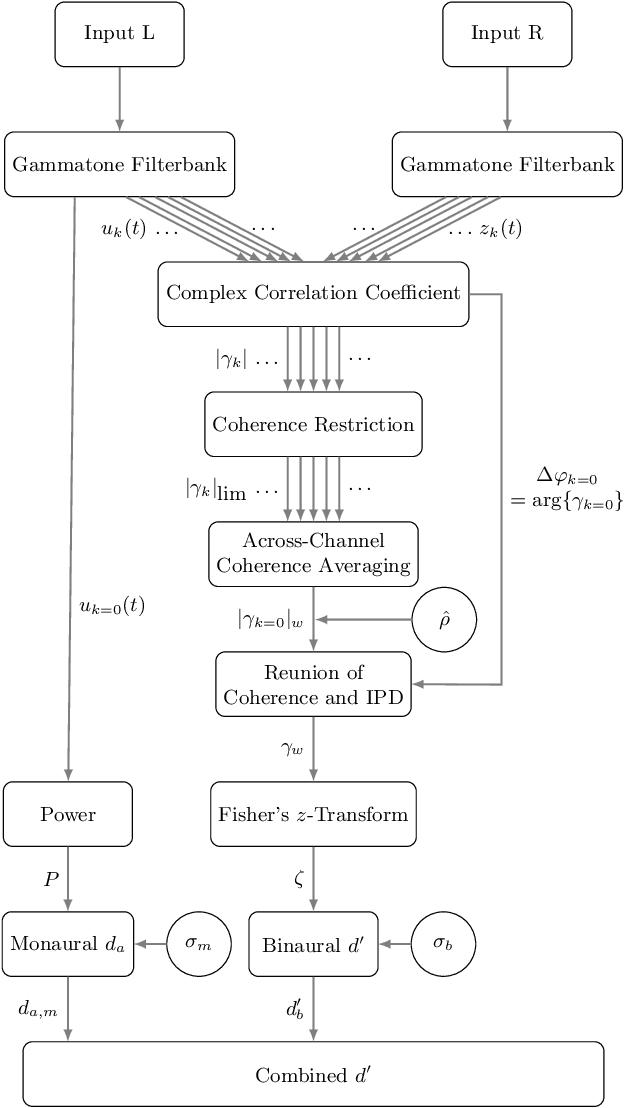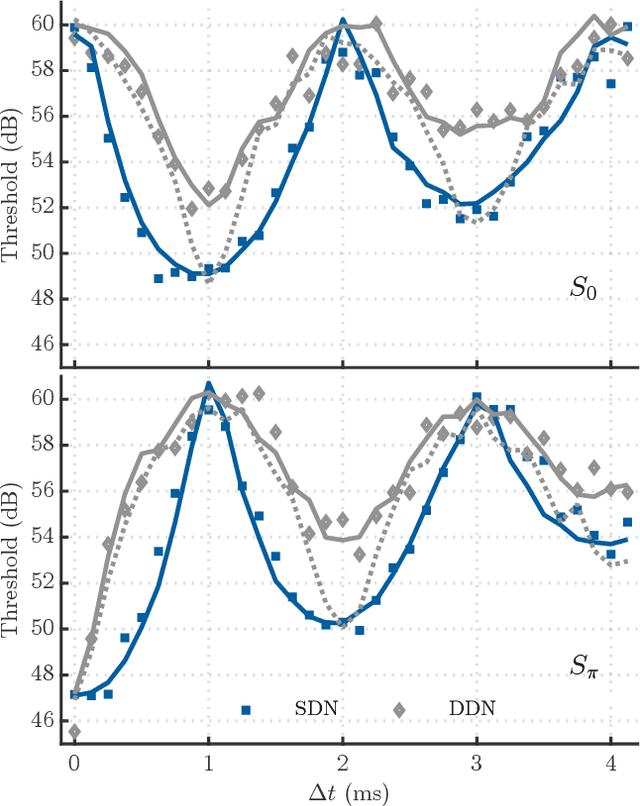Bernhard Eurich
Interaural Coherence Across Frequency Channels Accounts for Binaural Detection in Complex Maskers
Oct 06, 2021



Abstract:Differences in interaural phase configuration between a target and a masker can lead to substantial binaural unmasking. This effect is decreased for masking noise having an interaural time difference (ITD). Adding a second noise with the opposite ITD further reduces binaural unmasking. Thus far, simulation of the detection threshold required both a mechanism for internal ITD compensation and an increased binaural processing bandwidth. An alternative explanation for the reduction is that unmasking is impaired by the lower interaural coherence in off-frequency regions caused by the second masker (Marquardt and McAlpine 2009, JASA pp. EL177 - EL182). Based on this hypothesis the current work proposes a quantitative multi-channel model using monaurally derived peripheral filter bandwidths and an across-channel incoherence interference mechanism. This mechanism differs from wider filters since it is moot when the masker coherence is constant across frequency bands. Combined with a monaural energy discrimination pathway, the model predicts the differences between single- and double-delayed noise, as well as four other data sets. It can help resolving the inconsistency that simulation of some data sets requires wide filters while others require narrow filters.
 Add to Chrome
Add to Chrome Add to Firefox
Add to Firefox Add to Edge
Add to Edge